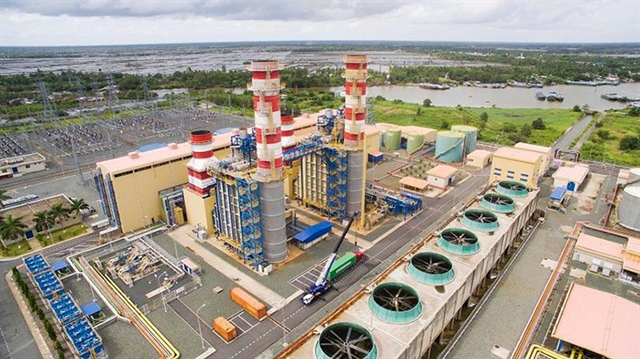 Economy
Economy


|
| An LNG power plant in the southern province of Cà Mau. Photo courtesy of the Ministry of Industry and Trade |
HÀ NỘI — Too many variables and over-reliance on imports have been hindering Việt Nam's plan to build power plants running on liquefied natural gas (LNG), industry experts have said.
A key issue for investors was a lack of guarantee for future output once the plants become operational, or at least a penalty clause in the event Electricity Vietnam (EVN) - the country's largest power distributor - failed to purchase the said output.
EVN, however, said such a policy was not possible under the country's current regulations, which has resulted in a number of projects being unable to proceed.
A source from the Ministry of Industry and Trade said it would likely take a long time to overcome such legal hurdles and conclude negotiations with investors, especially foreign ones.
Another issue was the difficulty in calculating energy prices based on LNG.
As global demand rises and supply contracts, LNG-based electricity likely will become more expensive in the future.
According to the country's latest energy planning paper, costs per MMBtu (Metric Million British Thermal Unit) were estimated at US$10.60 during the 2021-45 period or $0.092 per kWh, $0.011 higher than the average cost incurred by the current production. Higher LNG costs in the future will widen this gap even further.
In order to realise a goal to produce 23,900 MW from LNG as laid out in the paper, Việt Nam must import 15-17 million tonnes of LNG on a yearly basis, which requires the country to start negotiating orders years in advance to secure supply.
Given the entire supply of LNG must be imported and how volatile the LNG global market has been in recent years, experts have called for alternative sources to be put in place to ensure the country's energy security. VNS